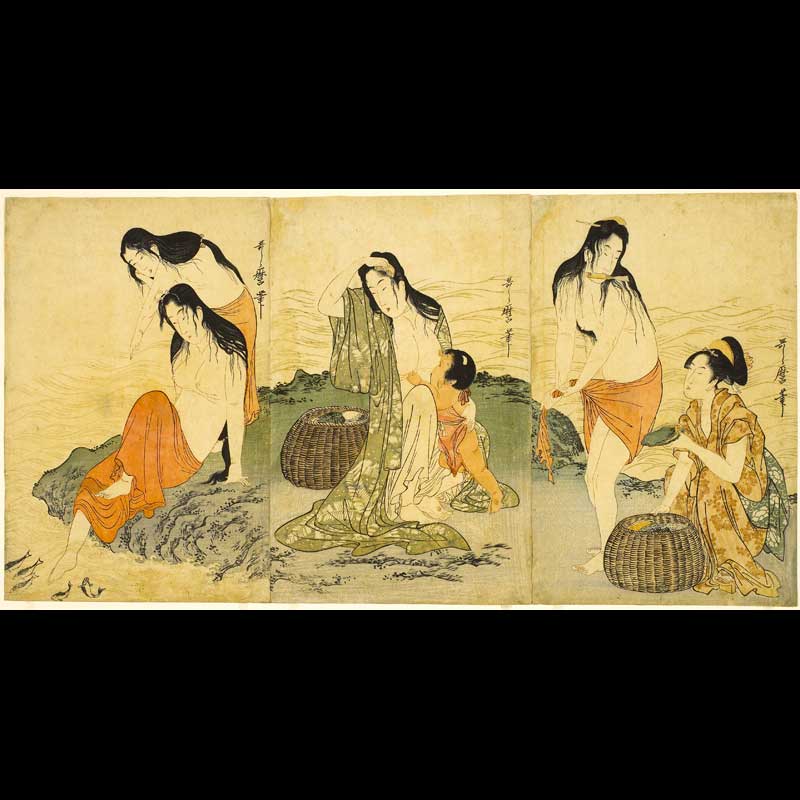Abalone Divers, 1797–98
Color woodblock print (nishiki-e)
Bequest of Richard P. Gale 74.1.156a–c
Cat. no. 100
This triptych shows four women divers who harvest abalone and other marine delicacies from the rocky ocean floor. Historically, these ama (literally, “women of the sea”) were the wives of fishermen, supplementing the family’s income with this seasonal occupation. In order to move freely as they searched for abalone among rocky crevices, ama typically dove topless, wearing only their underskirts.
The statuesque beauty of Utamaro’s women, the novelty of their nudity and long, undressed hair, and the unexpected grandeur of a composition featuring fisherwomen all combined to make this an impressive production. Technically, too, it is a rare example in which the printer used red pigment, rather than the usual black ink, to outline the women’s bodies, giving them a more fleshlike appearance. It is also one of the best examples of how ukiyo-e artists circumvented government regulations against morally corrupting images. By picturing women whose profession required partial nudity, Utamaro and his publisher could claim that the women’s sexuality resulted from realism rather than eroticism.

